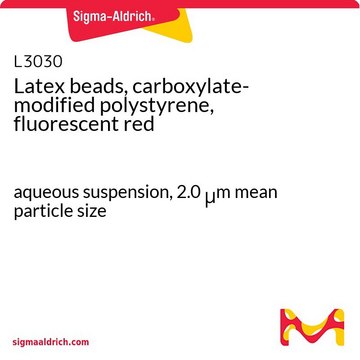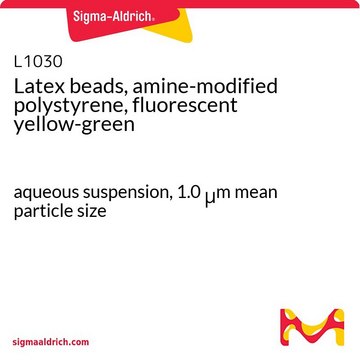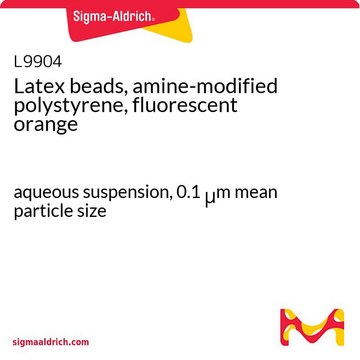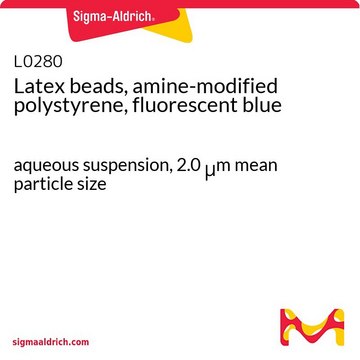L3280
Latex beads, carboxylate-modified polystyrene, fluorescent red
aqueous suspension, 0.5 μm mean particle size
Sinônimo(s):
Carboxylate Polystyrene Beads, Fluorescent Latex Beads
About This Item
Produtos recomendados
forma
aqueous suspension
Nível de qualidade
composição
Solids, 2.5%
técnica(s)
cell based assay: suitable
tamanho médio de partícula
0.5 μm
fluorescência
λex ~575 nm; λem ~610 nm
aplicação(ões)
cell analysis
Procurando produtos similares? Visita Guia de comparação de produtos
Aplicação
- along with Milli-Q for fluid dynamic studies
- along with bile salts for confocal studies
- for particle encapsulation
Código de classe de armazenamento
10 - Combustible liquids
Classe de risco de água (WGK)
WGK 3
Ponto de fulgor (°F)
Not applicable
Ponto de fulgor (°C)
Not applicable
Equipamento de proteção individual
Eyeshields, Gloves
Certificados de análise (COA)
Busque Certificados de análise (COA) digitando o Número do Lote do produto. Os números de lote e remessa podem ser encontrados no rótulo de um produto após a palavra “Lot” ou “Batch”.
Já possui este produto?
Encontre a documentação dos produtos que você adquiriu recentemente na biblioteca de documentos.
Os clientes também visualizaram
Nossa equipe de cientistas tem experiência em todas as áreas de pesquisa, incluindo Life Sciences, ciência de materiais, síntese química, cromatografia, química analítica e muitas outras.
Entre em contato com a assistência técnica












